- Home›
- Healthy Living›
- 7 Must Try Yoga Poses For Muscle Building
7 Must Try Yoga Poses For Muscle Building
By: Priyanka Maheshwari Sun, 01 Oct 2023 5:05:31
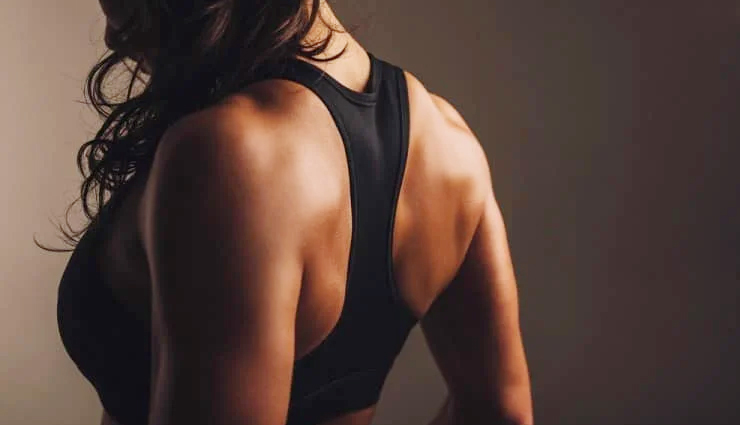
Prepare to be surprised if you believe that hitting the gym is the sole method for muscle development. Have you ever considered the concept of using yoga as a means of building muscle? Chances are, not many people have. Nevertheless, yoga is an incredibly versatile practice, and it's entirely possible to achieve a toned, lean, and well-defined physique right on your yoga mat. In this article, we present the seven most effective yoga poses that can assist you on your journey to building muscle, along with step-by-step instructions for proper execution. Let's delve into them!
Unlike a traditional gym setting where lifting weights is the norm for muscle growth, yoga takes a different approach by utilizing your own body weight as resistance instead of dumbbells. Certain yoga poses are designed to create tension in your muscles, effectively breaking down muscle fibers. Subsequently, your body responds by building additional muscle mass to compensate. It's essential to select asanas (yoga postures) that can achieve this, and a selection of such poses is outlined below.
A study conducted on young adults as part of Project EAT, involving 1664 participants, revealed that 16.2% of them engaged in yoga practice for a minimum of 30 minutes per week. After accounting for initial body satisfaction levels and body mass index, it was observed that individuals who practiced yoga reported higher levels of concurrent body satisfaction in comparison to those who did not partake in yoga sessions.
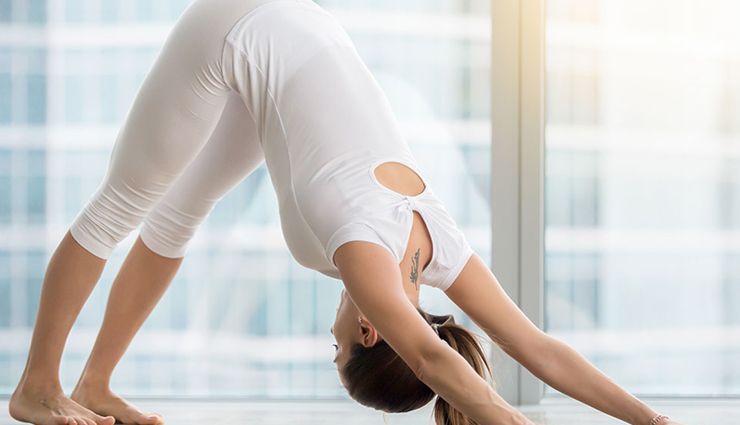
# Surya Namaskar Cycle
Step 1: Pranamasana (Prayer Pose)
- Stand at the edge of your mat with your feet together.
- Join your palms in front of your chest in a prayer position.
- Take a few deep breaths, relax, and center your mind.
Step 2: Hasta Uttanasana (Raised Arms Pose)
- Inhale, raise your arms upward, and arch your back slightly, pushing your hips forward.
- Keep your biceps close to your ears and stretch your whole body.
Step 3: Hastapadasana (Hand to Foot Pose)
- Exhale, bend forward from your waist, keeping your spine straight.
- Bring your hands down to the floor beside your feet. If necessary, bend your knees slightly.
Step 4: Ashwa Sanchalanasana (Equestrian Pose)
- Inhale, extend your right leg back and drop your right knee to the floor.
- Arch your back, lift your chest, and look up. Keep your hands on the floor beside your left foot.
Step 5: Dandasana (Plank Pose)
- Inhale, take your left leg back, aligning your body in a straight line from head to heels.
- Engage your core muscles and maintain a plank position.
Step 6: Ashtanga Namaskara (Salute with Eight Parts)
- Gently lower your knees, chest, and chin to the floor, keeping your hips slightly elevated.
- Your eight body parts – toes, knees, chest, hands, and chin – should touch the ground, resembling a salutation with eight parts.
Step 7: Bhujangasana (Cobra Pose)
- Slide forward, untuck your toes, and inhale as you lift your chest into a gentle backbend.
- Keep your hands below your shoulders and elbows slightly bent. Look up and open your chest.
Step 8: Parvatasana (Mountain Pose)
- Exhale, tuck your toes, and lift your hips, forming an inverted V shape.
- Keep your heels on the ground, straighten your legs, and push your chest toward your thighs.
Step 9: Ashwa Sanchalanasana (Equestrian Pose) - Repeat
- Inhale, step your right foot forward between your hands, drop your left knee to the floor, and look up.
Step 10: Hastapadasana (Hand to Foot Pose) - Repeat
- Exhale, bring your left foot forward to meet your right foot, keeping your palms on the floor beside your feet.
Step 11: Hasta Uttanasana (Raised Arms Pose) - Repeat
- Inhale, rise up, extend your arms overhead, and arch your back slightly.
Step 12: Pranamasana (Prayer Pose) - Repeat
- Exhale, straighten your body, and bring your palms together in front of your chest.
Repeat the entire sequence with the opposite leg to complete one cycle of Surya Namaskar. Repeat for the desired number of cycles.
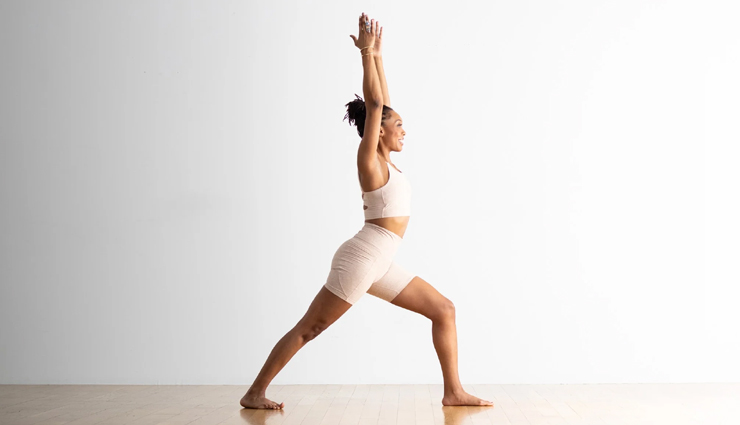
# Virabhadrasana 1
Start in Mountain Pose (Tadasana):
- Stand at the front of your mat with your feet together.
- Engage your thighs and lift your chest. Bring your palms together in a prayer position at your heart center.
Step Back:
- Inhale, step your left foot back about 3 to 4 feet. Keep your feet hip-width apart. Your right foot should be pointing forward, and your left foot should be angled slightly outward.
Align Your Body:
- Square your hips and shoulders to the front of the mat.
- Keep your pelvis tucked slightly under, engaging your core muscles.
Raise Your Arms:
- Inhale, raise your arms straight up overhead, reaching toward the sky.
- Keep your shoulders relaxed and away from your ears.
Bend Your Right Knee:
- Exhale, bend your right knee until your thigh is parallel to the floor. Your shin should be perpendicular to the floor.
- Ensure your right knee is directly above your right ankle. If your knee extends beyond your ankle, adjust your stance.
Gaze Forward:
- Soften your gaze and look straight ahead, keeping your neck in a neutral position.
Hold the Pose:
- Hold the pose for several breaths, maintaining a steady breath and strong legs.
Exit the Pose:
- To release, straighten your right leg and lower your arms back to your sides.
- Step your feet together back into Mountain Pose.
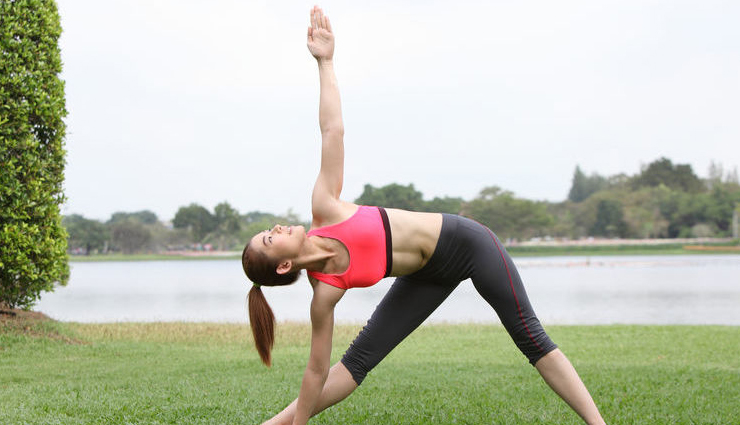
# Trikonasana
Starting Position:
- Begin in a standing position (Tadasana) at the top of your mat.
- Step your feet about 3 to 4 feet apart, ensuring your heels are aligned.
Positioning Your Feet:
- Turn your right foot out 90 degrees, so your toes point to the short edge of the mat.
- Pivot your left foot slightly inward, about 15 degrees, ensuring your left heel aligns with your right heel.
Extend Your Arms:
- Inhale, extend your arms parallel to the floor, palms facing down. Keep your shoulders relaxed and away from your ears.
- Engage your quadriceps and lift your kneecaps.
Shift Your Hips:
- Exhale, shift your hips to the left as you reach your right arm down towards your right shin, ankle, or the floor outside your right foot. Avoid placing your hand directly on the knee.
- Your left arm extends vertically upward, aligning with your right arm.
Gaze Direction:
- Turn your head to gaze at your left thumb, keeping your neck in a neutral position. If this strains your neck, look straight ahead or down at the floor.
Maintain the Pose:
- Hold the pose for a few breaths, breathing deeply and maintaining a straight line from your left heel to your fingertips.
Exit the Pose:
- Inhale, engage your core, and come back to the starting position with arms extended.
- Turn your feet to the front, parallel to the short edges of the mat.
Repeat on the Other Side:
- Repeat the pose on the other side, turning your left foot out and reaching your left arm down while extending your right arm upward.
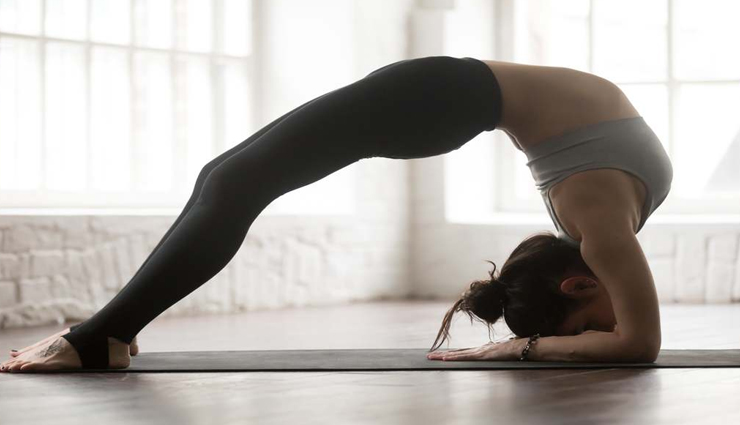
# Sethu Bandhasana
Starting Position:
- Lie flat on your back on a yoga mat. Bend your knees and place your feet flat on the floor, hip-width apart.
- Rest your arms alongside your body, palms facing down.
Setting Up the Pose:
- Press your feet firmly into the mat as you lift your hips towards the ceiling. Your thighs should be parallel to each other.
- Clasp your hands under your back and straighten your arms while rolling your shoulders underneath you.
- Your chin should be slightly tucked into your chest, lengthening the back of your neck.
Lifting the Hips:
- Inhale deeply and lift your hips higher, aiming to create a straight line from your shoulders to your knees.
- Keep your knees directly above your heels and press your chest toward your chin.
Engaging Muscles:
- Engage your buttocks and thighs to support your lifted hips. Keep your inner thighs active.
- Press your arms and shoulders into the mat for stability.
Breathing and Holding:
- Breathe deeply and hold the pose for a few breaths, relaxing your face and neck muscles. Keep your breath smooth and steady.
Exiting the Pose:
- Release your hands and slowly roll your spine back down to the mat, one vertebra at a time.
- Rest in Savasana (Corpse Pose) to relax your body and integrate the benefits of the pose.
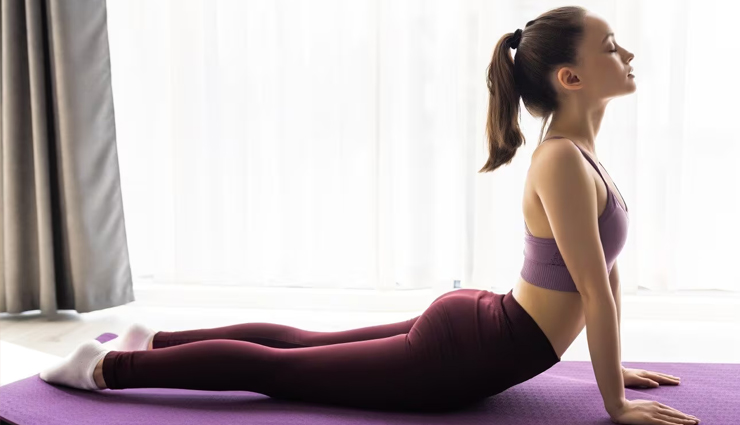
# Bhujangasana
Starting Position:
- Lie flat on your stomach, with your legs extended and the tops of your feet resting on the mat.
- Place your palms on the mat next to your shoulders, fingers pointing forward. Elbows should be close to your body.
Setting Up the Pose:
- Inhale and press your palms firmly into the mat. Slowly begin to straighten your arms, lifting your chest and upper body off the mat.
- Keep your pubic bone on the floor and engage your buttocks to protect your lower back.
- Your elbows can be slightly bent, and your shoulders should be away from your ears.
Lifting the Chest:
- Use the strength of your back muscles to lift your chest higher. Imagine lengthening your spine as you lift.
- Keep your gaze forward or slightly upward without straining your neck. Your neck should be in line with your spine.
Engaging Muscles:
- Press the tops of your feet, thighs, and pelvis firmly into the mat.
- Squeeze your shoulder blades together to open your chest more.
- Breathe deeply and expand your chest as you hold the pose, but avoid putting excessive pressure on your lower back.
Breathing and Holding:
- Hold the pose for a few breaths, breathing deeply and steadily. Focus on the stretch in your spine and the opening of your chest.
- Keep your awareness on your breath, and relax your face and neck muscles.
Exiting the Pose:
- Exhale and gently release the pose, lowering your chest back down to the mat.
- Turn your head to one side and rest your cheek on the mat. You can shake your hips gently from side to side to release any tension in your lower back.
- Rest in Child's Pose (Balasana) or Corpse Pose (Savasana) to relax and integrate the benefits of the pose.
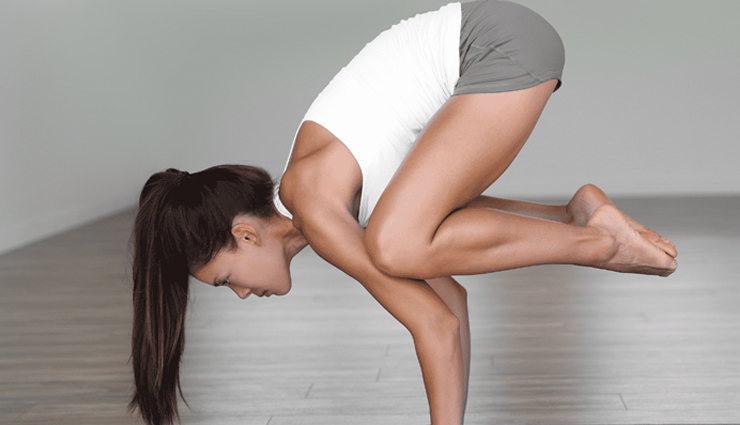
# Bakasana
Starting Position:
- Begin in a squatting position with your feet slightly apart. Lower your hips toward the heels and place your palms flat on the mat, shoulder-width apart.
- Spread your fingers wide and press firmly into the ground to create a stable foundation.
Setting Up the Pose:
- Shift your weight onto your hands and start to bend your elbows slightly. Place your knees on the back of your upper arms, close to the armpits.
- Lift your heels off the ground, balancing on the balls of your feet.
Engaging Muscles:
- Engage your core muscles and focus on drawing your belly button toward your spine.
- Lean forward slightly and start to shift more weight onto your hands. Lift one foot off the ground and then the other, bringing your toes together behind you.
Balancing and Holding:
- As you lift your feet off the ground, find your balance in the pose. Keep your gaze forward, about a foot or two in front of you, to maintain your balance.
- Continue to engage your core and squeeze your knees gently against your upper arms to prevent slipping.
Steadying Your Balance:
- Balance in Bakasana by engaging your arm and core muscles. Keep your breathing steady and calm.
- Try to hold the pose for a few breaths, gradually extending the duration as your strength and balance improve.
Exiting the Pose:
- To come out of Bakasana, gently lower your feet back to the mat.
- Rest in Child's Pose (Balasana) or relax in a standing position to release any tension in your wrists and arms.
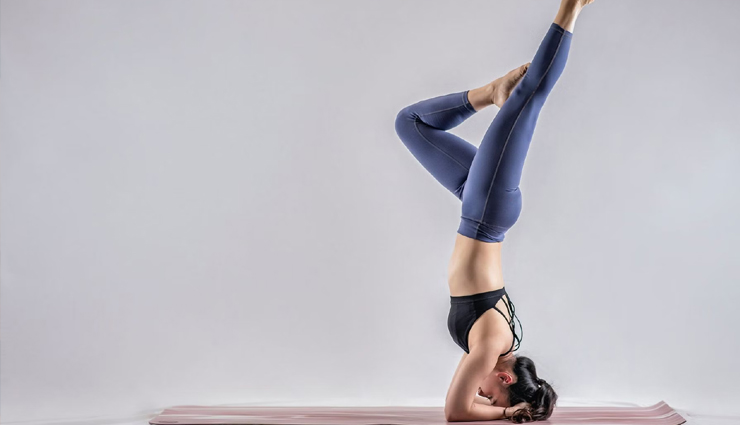
# Salamba Sirsasana
Preparing for the Pose:
- Start in a kneeling position with your hands interlocked and elbows shoulder-width apart on the mat, forming a triangle base.
- Place the crown of your head on the mat between your hands, creating a tripod with your head and hands.
Lifting Into the Pose:
- Lift your hips toward the ceiling, straightening your legs and walking your feet closer to your head.
- Slowly start to shift your weight onto your head and forearms. Engage your core muscles to support your spine.
- Bend your knees and draw them toward your chest. Keep your feet together.
Lifting Your Legs:
- Carefully lift one leg off the ground, extending it toward the ceiling.
- Engage your leg muscles and point your toes upward.
- As you gain stability, lift your other leg to join the first, coming into the full headstand position.
Balancing and Aligning:
- Keep your core engaged and legs active, maintaining a straight line from your head to your heels.
- Focus on a point between your hands to maintain balance. Your gaze should be steady, not looking around the room.
- Adjust your balance by engaging your fingers and pressing your forearms down into the mat.
- Breathe deeply and evenly, relaxing your neck and throat. Avoid putting pressure on your neck.
Exiting the Pose:
- To come down, slowly lower one leg at a time, bending your knees and returning them to the chest.
- Lower your feet to the ground with control, gently resting your knees on the mat.
- Sit back into Child's Pose (Balasana) to rest and relax your neck and shoulders.
Note: Practice this pose under the guidance of an experienced yoga instructor if you're a beginner.





